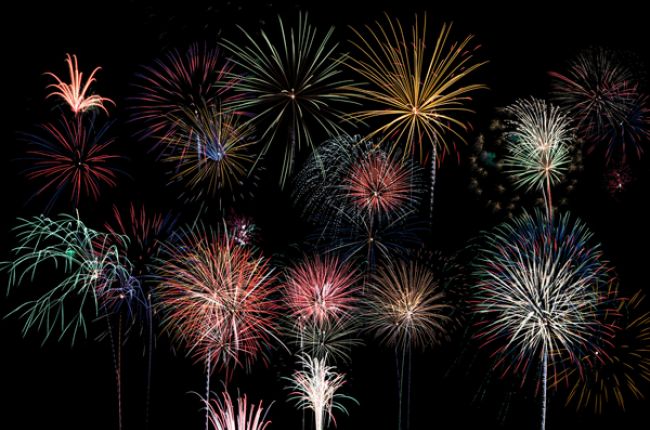What minerals are used in fireworks?
Quote from 行政 on November 7, 2022, 11:40 am
Every Fourth of July, hundreds of millions of pounds of fireworks are set off across the United States. The bang, flash, sparkle, and colors of fireworks all come from specific minerals,1,2 which come from all over the United States and the rest of the world.
Explosions: gunpowder – the explosions in most fireworks still use traditional gunpowder, composed of potassium nitrate (saltpeter), sulfur, and charcoal. Potassium is largely imported from Canada, though some is mined in New Mexico and Utah.3 Most domestic sulfur production comes from Louisiana and Texas, where it is extracted from oil and natural gas;3 it’s the sulfur that gives fireworks their characteristic smell.
Flashes and bangs: aluminum powder – 28% of U.S. aluminum consumption comes from recycling discarded aluminum products. The U.S. imports a large amount of both aluminum and aluminum ore (bauxite) from many countries around the world. Canada provides roughly half of aluminum imports; Jamaica provides roughly half of imported aluminum ore.3
Sparks: iron filings – 98% of the iron ore mined in the United States comes from Michigan and Minnesota.3 Recycling is also a major source of iron and steel.
Colors
The following colors each come predominantly from different compounds of a single element. Common compounds are nitrates, carbonates, chlorides, chlorates, and oxalates.2
Red: strontium – most strontium in the United States comes from the mineral celestite.3 The United States does not mine any strontium ore, relying on imports for 100% of its supply, mostly from Mexico.3
Blue: copper – lots of copper ore is mined in the United States, 66% of which comes from Arizona, followed by Utah, New Mexico, Nevada, Montana, Michigan, and Missouri.3
Green: barium – most barium comes from the mineral barite. The United States imports 84% of the barite it uses, mostly from China.3
Yellow: sodium – sodium nitrate provides a particularly bright yellow flame. Most sodium nitrate comes from the Atacama desert in Chile and Peru,1 but it is also synthesized industrially from other sodium compounds.
Other colors are commonly produced from mixtures of compounds:
- Orange = strontium + sodium (some calcium compounds can also produce orange colors)
- Purple = strontium + copper
- Silver-white = titanium, zirconium, and magnesium alloys
References
1 The Elements of a Dazzling Fourth of July U.S. Geological Survey
2 Table of Standard Fireworks Chemicals U.S. Pipeline and Hazardous Materials Safety Administration
3 Mineral Commodity Summaries 2019 U.S. Geological Survey

Every Fourth of July, hundreds of millions of pounds of fireworks are set off across the United States. The bang, flash, sparkle, and colors of fireworks all come from specific minerals,1,2 which come from all over the United States and the rest of the world.
Explosions: gunpowder – the explosions in most fireworks still use traditional gunpowder, composed of potassium nitrate (saltpeter), sulfur, and charcoal. Potassium is largely imported from Canada, though some is mined in New Mexico and Utah.3 Most domestic sulfur production comes from Louisiana and Texas, where it is extracted from oil and natural gas;3 it’s the sulfur that gives fireworks their characteristic smell.
Flashes and bangs: aluminum powder – 28% of U.S. aluminum consumption comes from recycling discarded aluminum products. The U.S. imports a large amount of both aluminum and aluminum ore (bauxite) from many countries around the world. Canada provides roughly half of aluminum imports; Jamaica provides roughly half of imported aluminum ore.3
Sparks: iron filings – 98% of the iron ore mined in the United States comes from Michigan and Minnesota.3 Recycling is also a major source of iron and steel.
Colors
The following colors each come predominantly from different compounds of a single element. Common compounds are nitrates, carbonates, chlorides, chlorates, and oxalates.2
Red: strontium – most strontium in the United States comes from the mineral celestite.3 The United States does not mine any strontium ore, relying on imports for 100% of its supply, mostly from Mexico.3
Blue: copper – lots of copper ore is mined in the United States, 66% of which comes from Arizona, followed by Utah, New Mexico, Nevada, Montana, Michigan, and Missouri.3
Green: barium – most barium comes from the mineral barite. The United States imports 84% of the barite it uses, mostly from China.3
Yellow: sodium – sodium nitrate provides a particularly bright yellow flame. Most sodium nitrate comes from the Atacama desert in Chile and Peru,1 but it is also synthesized industrially from other sodium compounds.
Other colors are commonly produced from mixtures of compounds:
- Orange = strontium + sodium (some calcium compounds can also produce orange colors)
- Purple = strontium + copper
- Silver-white = titanium, zirconium, and magnesium alloys
References
1 The Elements of a Dazzling Fourth of July U.S. Geological Survey
2 Table of Standard Fireworks Chemicals U.S. Pipeline and Hazardous Materials Safety Administration
3 Mineral Commodity Summaries 2019 U.S. Geological Survey


